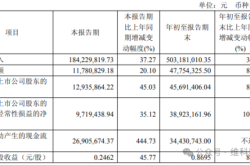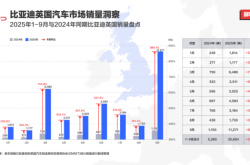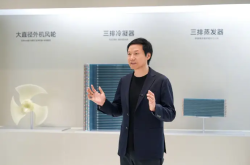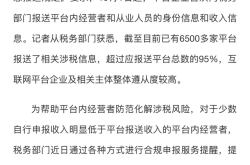Quark's Commercialization Struggles Reflect Alibaba's Strategic Anxiety in the "AI to C" Race
![]() 03/18 2025
03/18 2025
![]() 456
456

Quark's journey serves as a pivotal footnote in China's race to apply AI to consumer markets: Will it emerge as a revolutionary star or merely another bubble popped by fleeting traffic?
Content/Yibai
Editor/Yonge
Proofreader/Mangfu
In the summer of 2023, Quark, an AI app, became an overnight sensation thanks to its ability to fill in college entrance examination volunteer forms. However, just three months later, it was penalized by the Cyberspace Administration of China and became a trending topic on social media.
This dramatic turn of events epitomizes Quark's journey: It attracted young users with "free resources" but stirred controversy due to uncontrolled content; it rebranded itself with AI technology but struggled with commercialization.
Now, this "AI pioneer" on which Alibaba has pinned great hopes once again stands at a crossroads of transformation.
Competition in the AI industry is intensifying, and the implementation of the AI Agent concept faces numerous challenges.
With tech giants like Baidu and ByteDance increasing their investments in AI search and AI assistants, can Quark's strategic upgrade truly help Alibaba break through in the consumer market?
Part 1
Quark's "Rise": From a Tool Product to an AI Pioneer
Initially launched as a lightweight browser, Quark quickly garnered a following among young users with its minimalist design and ad-free approach.
As Baidu dominated the domestic search market, Quark chose a differentiated path, emphasizing precise search, personalized recommendations, and AI-assisted functions, gradually evolving into an intelligent search assistant.
During the fiscal year 2025 Q3 earnings call, Wu Yongming, CEO of Alibaba Group, stated that the company would increase investments in three key areas over the next three years, focusing on its core AI strategy, including AI and cloud computing infrastructure, AI foundation model platforms, AI-native applications, as well as AI transformation and upgrading of existing businesses.
However, Alibaba's recent financial reports highlight the growth in AI revenue for the Cloud Intelligence Group as a significant bright spot, but Quark's specific contributions as a core consumer product are not disclosed separately, buried instead in vague statements. This "prominent yet obscure" handling reflects Quark's delicate position within the Alibaba system: It is both a "future star" in the group's bet on consumer-grade AI and an experimental field where commercialization capabilities have yet to be proven.
Quark's elevated strategic position is also a crucial indicator of Alibaba's AI strategy expanding from the B-end to the C-end.
On March 13, leveraging the Tongyi large model, Alibaba officially launched the AI flagship app "New Quark" and announced its upgrade to a boundless "AI Super Box" to cater to users' diverse AI needs in work, study, and life.
After users enter commands into the "AI Super Box," Quark's intelligent hub automatically recognizes their intentions, plans and organizes them, and then mobilizes various models and Agent modules to help users complete tasks. This marks Alibaba's official entry into the AI Agent race and its attempt to capture the new wave of AI traffic dividends through Quark.
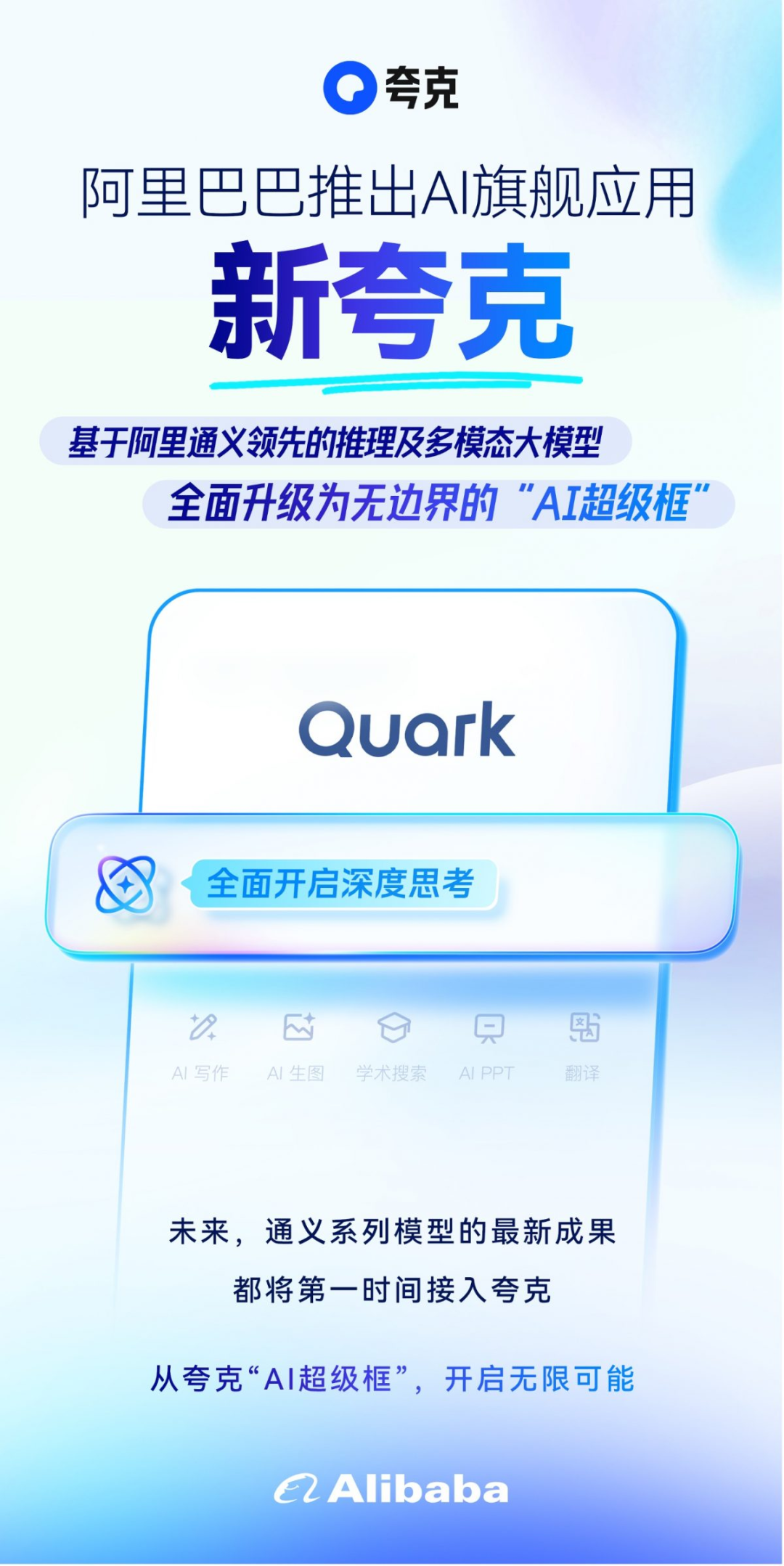
Currently, the upgraded Quark has received positive feedback. On March 14, Zhang Chaoyang tweeted about the upgraded Quark, stating that it "creates products in the form of an 'AI Super Box,' automatically invoking different functions to complete tasks by judging user intentions, satisfying various needs with one box. I asked two cosmological questions and used its deep thinking mode, and I was quite satisfied with the answers."

In recent years, Quark has continuously expanded its AI layout, incorporating Alibaba's self-developed Tongyi large model and applying AI technology in various functions such as search, cloud storage, documents, and AI painting. Since Alibaba listed Quark as one of its four strategic-level innovative businesses in 2023, Quark's user base has doubled annually, with cumulative downloads exceeding 370 million by the end of 2024, and post-00s users accounting for over 50%. It frequently tops the app store rankings and has become one of the most popular AI apps among young people in China.
This achievement is attributed to Quark's precise capture of niche scenarios: The AI question-solving function has created a word-of-mouth effect among students, AI writing and PPT generation have attracted new workers, and the product philosophy of "minimalist design" has further strengthened its tool attribute.
However, Alibaba's expectations for Quark have never been limited to a single tool.
Through a series of internal integrations—splitting the Tongyi large model team from Alibaba Cloud to the Intelligent Information Business Group and merging the Tmall Genie hardware team with Quark—Alibaba aims to build a closed-loop ecosystem of "AI assistant + hardware + multi-modality."
If this synergy can be achieved, Quark may become the technological hub connecting Alibaba's consumer end and cloud services.
Part 2
Quark in a Tight Spot: Balancing Restraint and "Greed"
While Alibaba has profound expectations for Quark as an "AI flagship app," it cannot conceal an awkward reality: This product carrying the group's AI ambitions has yet to establish a business model commensurate with its strategic position.
Quark has abandoned the traditional advertising monetization model and instead monetizes through value-added services such as cloud storage membership subscriptions and AI document processing. Quark has chosen cloud storage membership payments as its core revenue source: 6TB of storage space and document processing tools are packaged and sold with annual fees ranging from 99 to 158 yuan. This model has proven feasible in vertical applications like Baidu Cloud Storage.
However, Quark's challenge lies in the fact that its positioning as an "AI all-rounder" blurs users' payment motivation—when most users only pay for cloud storage, AI functions become add-on services.
In other words, Quark's AI functions are more of an embellishment rather than the core driving force for user payments.
Secondly, the commercialization path for AI tools is unclear.
Although Quark's AI search, AI image generation, AI writing, and other functions have attracted a group of early adopters, the monetization model remains relatively vague.
In contrast, ByteDance's Doubao AI has built a diversified revenue system through API licensing, B-end cooperation, advertising revenue sharing, and API calls, making its commercial value clearer.
DingTalk forms rigid demand by integrating enterprise services, while 1688 binds small and medium-sized enterprises with supply chain advantages. In contrast, Quark is still swaying between the positioning of a "tool" and a "platform," and its explosive growth highly depends on scenario-based demands such as college entrance examination seasons and job hunting periods. Once these hotspots fade, user retention rates may face challenges, and the logic of user growth appears fragile.
The loss of control in function iteration further exacerbates its predicament.
From an early "minimalist browser" to today's "AI Swiss Army Knife," the installation package size of Quark's Android version has swelled to 123.59MB, and newly added functions such as health assistants and game centers have been criticized by users as "redundant."
On the Black Cat Complaints platform, waves of complaints about "automatic deductions" and "complicated functions" expose the conflict between user experience and commercial goals.
More severely, there is a disconnect between technical investment and product effectiveness: Although Quark claims that its AI answer generation only takes 6 seconds, user feedback shows high content repetition rates and questionable accuracy in academic scenarios.
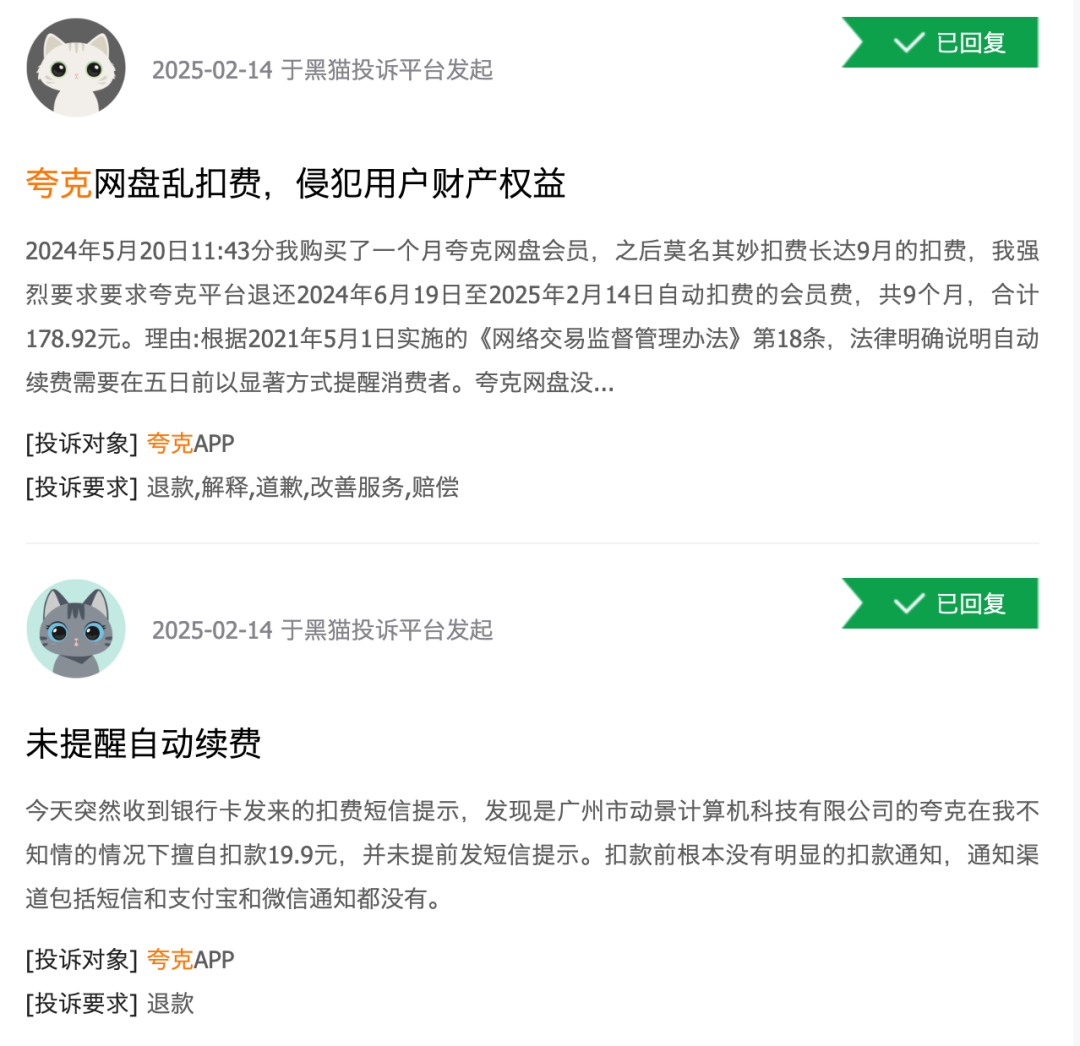
External competition makes the crisis even worse.
Baidu and Tencent have lowered the technical threshold by integrating open-source large models, Doubao has diverted users with vertical scenarios, and the rise of open-source models like DeepSeek is eroding the technical uniqueness of Quark's "self-developed model."
Quark's proud moat is gradually eroding amid the wave of technological equalization.
Part 3
The Ultimate Test of Ecological Synergy and Strategic Patience
Achieving synergy within the Alibaba ecosystem is crucial for Quark.
Theoretically, the hardware integration of Tmall Genie and Quark, as well as the technological feedback from the Tongyi large model, can form a closed loop of "software + hardware + model." Users can scan objects through AI glasses, and Quark will instantly provide product information and redirect them to Taobao for purchase. If this scenario can be realized, it will create a closed loop of value in the consumption chain.
However, the reality is that there are still data barriers and interest games among various business lines within Alibaba. The chronic problem of "internal friction" within the Alibaba ecosystem—where each business line operates independently—remains an invisible obstacle for Quark to overcome.
For Quark, its core competitiveness lies in Alibaba's AI technical support and data resources.
However, after the open-sourcing of Alibaba's Tongyi large model, its technological advantages are being weakened. To break through technical bottlenecks, Alibaba is also striving to accelerate the deployment of AI talent reserves.
In February 2025, Alibaba's AI to C business initiated large-scale recruitment, opening hundreds of positions, 90% of which focus on AI technology research and development, with key investments in cutting-edge fields such as text generation, multi-modal large models, and AI Agents.
However, the conversion efficiency of technological investment remains questionable. Although Alibaba Cloud's Bailian platform has launched the DeepSeek series of open-source models, its low-price strategy of "2 million tokens for 1 yuan" has instead lowered the industry's technical threshold and exacerbated Quark's technical homogeneity crisis.
Quark's future hinges on two races:
The first is a race against time; Alibaba's "dual-core-driven" (e-commerce and cloud computing) strategy requires resources to be inclined toward highly certain businesses. If Quark cannot prove its substantial pull on the cloud business (such as increasing cloud resource consumption through AI services) or its independent profit potential in the long run, the group's support may weaken.
The second is a race against competitors; Baidu's Wenxin Yiyan is deepening its services through education and medical scenarios, while Doubao is capturing general users through entertaining interactions. If Quark cannot consolidate its advantages in education and office scenarios, it may fall into the trap of "high user volume, low barriers."
Policy and ethical risks also hang like a sword of Damocles: In 2023, Quark was penalized by the Cyberspace Administration of China due to content review issues, exposing the regulatory hidden dangers of AI-generated content. If AI-generated content triggers academic fraud disputes, or the health consultation module provides misleading information due to algorithmic biases, the regulatory hammer may directly shatter user trust.
Part 4
Between Ideal and Reality: Searching for the "Third Path" for AI to C
Quark's predicament is a microcosm of the AI transformation of Chinese technology companies.
Technological idealists aspire to reshape the world with AI, but the capital market demands quarterly profits; users desire "all-powerful" assistants but refuse to pay for bloated functions; groups aspire to ecological synergy but cannot escape the internal friction of "feudalism." This contradiction is infinitely amplified in Quark: It is both an experimental field for Alibaba's AI ambitions and a victim of organizational games.
Perhaps the key to breaking the deadlock lies in returning to the essence—letting technology solve real problems, not create pseudo-demands.
If Quark can abandon the obsession with being an "all-rounder," jump out of the binary opposition between "tool" and "platform," and find the "third path" connecting users' rigid demands and technological strengths—by deeply cultivating vertical scenarios such as education and the workplace, and using AI to solve rigid demands like "volunteer filling anxiety" and "thesis writing pain points"—it may find a sustainable business model.
After all, users do not need a second Baidu, but they always need a "digital partner" to solve problems.
Today, Quark's fate is not only a reflection of Alibaba's anxiety but also a barometer for China's AI to C race.
When the technological wave recedes, only those players that can both solve practical problems and create sustainable value will be able to navigate through the cycle.
Quark's journey will provide a crucial footnote for China's AI to C race: Will it become a revolutionary star of the future, or just another bubble popped by fleeting traffic? The answer may become clear in the next 1-2 years.

